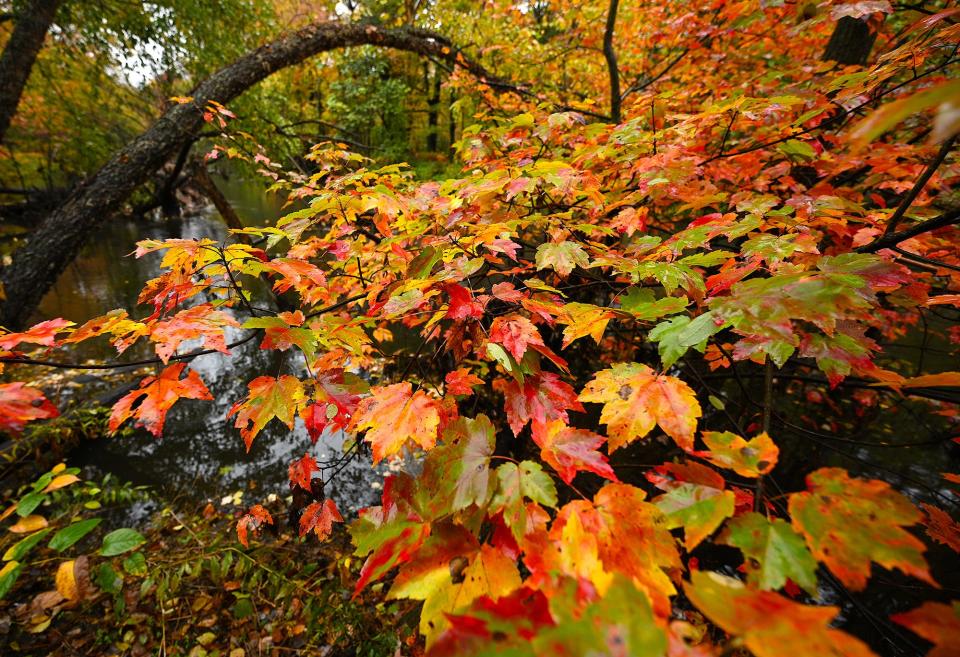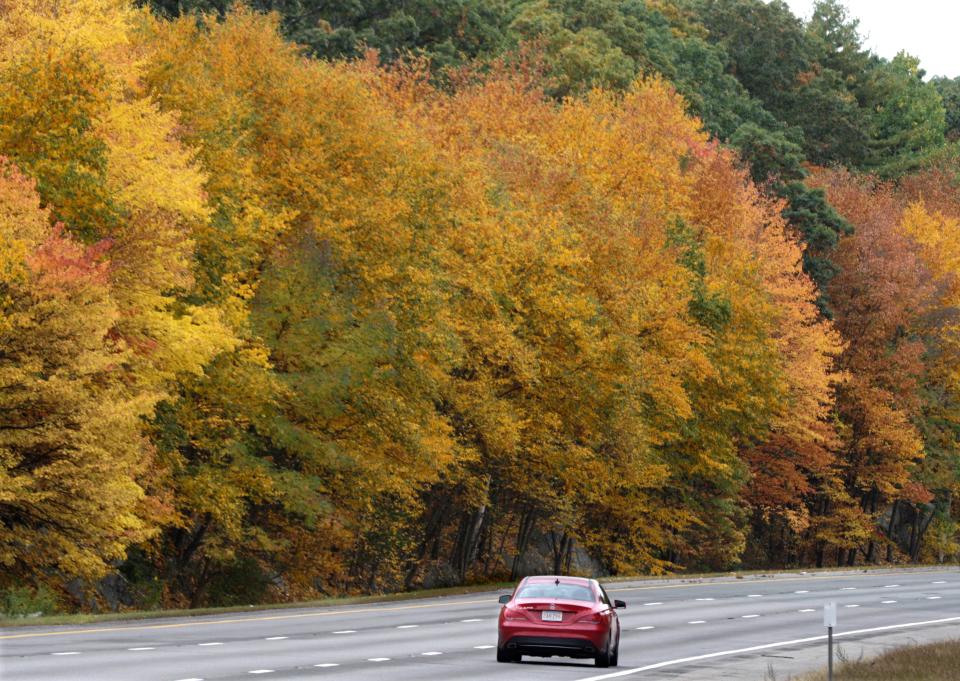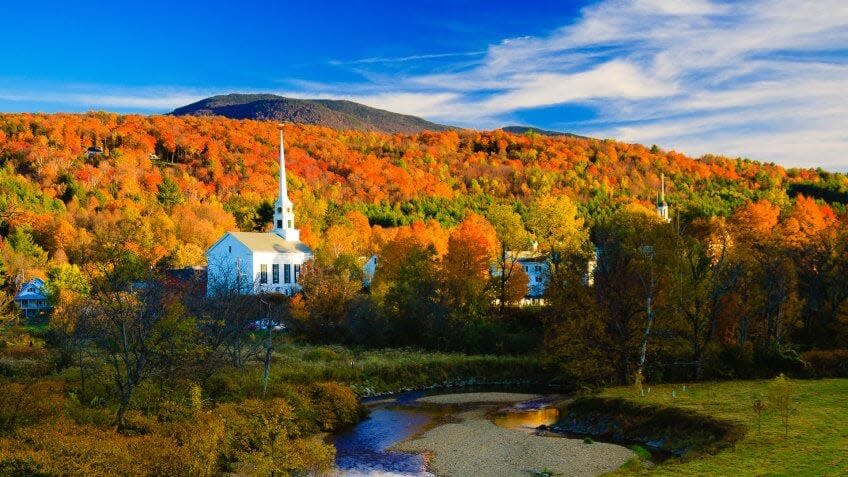Calling all leaf peepers: Drought to impact this year's fall foliage in New England.
Though New England always puts on a show each fall, the color palette of its trees this year will be duller because of recent drought conditions.
Vibrant reds and oranges may not be as prevalent this foliage season, and trees are more likely to shed their leaves early, said Paul Pastelok, senior meteorologist and lead U.S. long-range forecaster for AccuWeather.
That means if you want to see this year's likely muted, but still-beautiful, color, you'll have to get out for your leaf-peeping road trips earlier than usual. And location matters: Foliage in southern New England will be different than the leaves up north this year, based on how drought has impacted the region differently.

According to Yankee Magazine's annual fall foliage outlook, forests in northern New England appear healthy, but in the south and near the coast, are increasingly stressed by heat and drought.
Will drought impact New England's fall foliage?
Three factors influence autumn leaf color: leaf pigments, length of night and weather, according to the U.S. Forest Service
In terms of weather, consistent warm, sunny days and cool evenings are the recipe for sugars produced in the leaf that lead to reds, purples and crimsons.
The ingredients of a vibrant fall foliage season begin in the spring, said AccuWeather's Pastelok, with precipitation falling at average to above-average levels through the summer and dropping off around the end of August and start of September. Those conditions make for "really good reds and oranges," he said.

But this year was much drier than expected — really dry. The region also saw stretches of scorching hot temperatures. According to the U.S. Drought Monitor, parts of Massachusetts and Rhode Island are in extreme drought, while the rest of the region ranges from severe, to moderate, to "abnormally dry."
MA: Worcester County hit with outdoor water use restrictions as drought persists
RI: Senator asks for help for farmers amid drought
In mid-July, the Massachusetts Executive Office of Energy and Environmental Affairs announced the state was seeing a drought in 90% of its regions. In August, a critical level 3 drought in the Central, Connecticut River Valley, Northeast and Southeast regions was declared.
Parts of New England have seen 2 to 6 inches below their normal rainfall for much of the summer. And though much of the region saw rain on Labor Day weekend, the damage in terms of fall foliage has likely already been done.
"When it's dry, the tree will try to preserve itself and shut down leaf production earlier than normal," said Pastelok. "This is still happening, despite rain that just fell."
People may have already started noticing brown leaves over the last few weeks, as drought may cause some trees to skip color altogether. When the color does start to appear, the season may also be shorter.
More: Lost villages, ancient ruins, WWII ships uncovered as extreme heat lowers water levels
Experts do caution, though, that fall foliage season can be fickle to predict, and the next few weeks of September weather could really cement what this year's show of color will look like.
Lots of rain impacted fall foliage in 2021
Climate change is creating a world of extremes, shown by the opposite conditions impacting fall foliage both this year and last.
More: 2021's climate extremes show global warming has 'no sign of slowing'
While this year's foliage is being hit by drought, last year, New England saw significant rainfall over the summer. Boston, for example, saw its third-wettest summer on record. Parts of New England received more than a foot of rain during July 2021.
Impressive colors were expected for last year's season because of the rainfall, with peak color being pushed further into October than typical years.

Where can I see the best fall foliage in New England this year?
Leaf peepers in search of the region's best and brightest colors may need to head north this fall. While the peak color window is different depending on location, it's likely that northern areas will hit peak at the end of September this year, with the majority of peak color passing elsewhere by the second week in October.
Pastelok said Vermont, Maine and New Hampshire have fared better in terms of drought, so "recovery might be better there."
Up North: Vermont may have some of the best fall foliage in New England this year
Echoing that sentiment, Yankee Magazine tapped the White Mountains, Green Mountains, and mountains of western Maine as places where typical foliage conditions can be seen this year. They may even be "spectacular," the magazine said.
Foliage trips: Ever thought about a train ride to see changing leaves?
AAA Northeast recommends some top-rated road trip routes and hiking trails in the region where you're most likely to catch the season's most impressive color.
These include:
Acadia All-American Road in Maine
Green Mountain Byway and Route 108 in Vermont
Lakes Region in New Hampshire
The Mohawk Trail in Massachusetts
Ocean Drive in Rhode Island
Last Green Valley Scenic Byway in Connecticut
This article originally appeared on USA TODAY NETWORK: Drought hurting New England foliage. What leaf peepers need to know.

